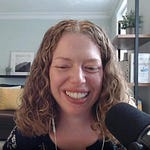If a writer publishes something and it’s not on Substack, does it make a sound?
Increasingly, it feels like the answer is no. Everyone is on Substack. And if by some fluke you can’t find them, wait a few days and check again. Katie Couric, Samin Nosrat, Rick Rubin, and Pete Buttigieg all launched newsletters in recent weeks, joining a platform that already hosts popular professors (Adam Grant, Heather Cox Richardson, Richard Dawkins), famed political commentators (Bari Weiss, Matthew Yglesias, Nate Silver), award-winning novelists (George Saunders, Rebecca Makkai, Elif Batuman), rock ’n’ roll stars (Patti Smith, Jeff Tweedy, Andrew Bird), and traditional media companies (New York Magazine, The Daily Mail).
What, one might ask, are they all doing there? Well, for one thing, Substack seems like a rare corner of today’s ransacked media landscape where writers can make real money. The Wall Street Journal reported earlier this year that 50,000 newsletters make money from 4 million paid subscriptions on the platform, and the 10 most popular bring in a combined $40 million a year. Other sources have reported that at least 50 Substack newsletters generate over $1 million in annual subscription revenue. By comparison, only 12 writers in 2020 secured book advances above $500,000. Twelve.
Substack has its detractors. WIRED tsk-tsked the platform after analysis by an AI-detection startup found that at least seven percent of the site’s most popular newsletters “significantly rely” on AI-generated content. Last year, tech journalist and podcaster Casey Newton migrated his newsletter off of Substack after growing frustrated with the platform’s laissez-faire moderation of extremist content. Others have warned that Substack is not as creator-friendly as it claims, pointing out tools the company has developed to encourage newsletter subscribers to opt out of emails and a persistent bot problem that may distort subscriber growth figures.
Still, there’s a reason even one-time Substack skeptics are changing their tunes. Gretchen Rubin, who sat out the early rush to the platform, recently launched a newsletter called Secrets of Adulthood. The reason? “Substack,” she told Author Insider, “seems to be the one place right now where people are like, ‘Dang, I’m having organic growth.’” For other writers, Substack just feels right. “There’s something about the vibe,” Susan Cain told us, “that I just find to be incredibly simpatico.” She added, “I just feel incredibly comfortable and elevated by what I’m doing there.”
Say, however, that you’re not a #1 New York Times bestselling author. Is Substack still worth it? As the platform gets ever more crowded, succeeding there, if you don’t already have a big audience, can feel as random as catching a free tee spat out by a halftime t-shirt cannon.
But what if it’s not all dumb luck? What if there are tools you can use, strategies you can deploy, to build a sizable audience, successfully convert a meaningful percentage to paid, and get the attention of agents and editors?
Enter Sarah Fay.
Sarah is the creator of Substack Writers at Work, a newsletter with more than 35,000 subscribers, where she doles out battle-tested techniques for finding your publication’s “why,” harnessing the power of Notes to build your audience, and, ultimately, earning an income.
We recently hosted a live Q&A with Sarah. She fielded our questions — as well as those from our members — about growth, branding, and the art of paywalling. You can watch the entire session above or read edited highlights below.
One last thing: Sarah will join us on July 8 at 12 p.m. ET for a workshop where she’ll offer the nuts and bolts advice for how you can use Substack to market your book. This workshop is only open to paid members. If you’re not a paid subscriber, please consider becoming one today:
Sarah’s Substack Journey
Author Insider: How did you come to Substack, and how did you come to launch Substack Writers at Work?
Sarah Fay: Five years ago, I had a book coming out called Pathological: The True Story of Six Misdiagnoses, and Harper Collins said, “Start a Substack.” I had no direction. I did what so many people do. I just started a Substack, and I started writing. It was phenomenal to have a space for my work. I just loved the idea that it was my personal magazine, and I could do whatever I wanted. But I didn’t grow. I had about 400 subscribers, who were really just personal contacts, and I didn’t get one new subscriber in two years.
Then my agent introduced me to Sophia, the Head of Writer Relations at Substack. She sat down with me, looked at my Substack, and said, “No, no, no. Change this, change this, change this. This is what works on Substack. This is what doesn’t.” She showed me around the platform and showed me a Substack to model myself after. Within six months, I had 2,000 subscribers.
I’m a teacher. I teach creative writing at Northwestern. So immediately I went to Substack and I said, “Can I teach people this?” And they said, “Yes, please.”
They set me up to do one-on-ones where I would sit down, look at someone’s Substack, and tell them the kind of things Sophia had told me. I’ve now seen 700 clients one-on-one — everyone from thought leaders, bestselling authors, and ex-CNN anchors to someone who has never had a platform at all and wants to be a writer.
The Four Elements of a Great Substack
What were some of the strategies that you discovered for yourself in those early days that you think might help the broad spectrum of writers?
You need four components.
Listen to this episode with a 7-day free trial
Subscribe to Author Insider From The Next Big Idea Club to listen to this post and get 7 days of free access to the full post archives.










